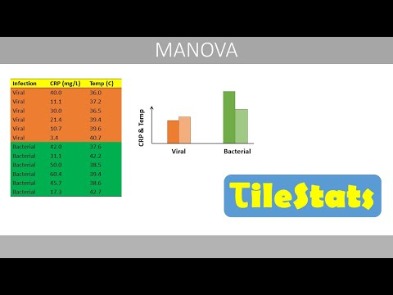Content
- What Is Variance Analysis? Definition, Explanation, 4 Types Of Variances
- Importance Of Direct Material Usage:
- Advantages Of Top Up Budgeting
- Formula To Calculate Direct Material Usage Variance:
- Standard Cost For Actual Output
- Management Accounting
The direct material usage variance is the difference between the actual and expected unit quantity needed to manufacture a product. The variance is used in a standard costing system, usually in conjunction with the purchase price variance.

The company must be investigated when the variance is significant and impact management decisions. It is normal to have variance but the should not be too big which can impact net profit. Material usage variance must be calculated using the standard price rather than the actual price. Material usage variance is calculated using the quantity of material utilized during the period rather than the quantity purchased.
What Is Variance Analysis? Definition, Explanation, 4 Types Of Variances
The $125 materials quantity variance is unfavorable because the actual quantity used exceeded the standard quantity by 50 pieces of direct materials (item 5-489). If the quantity of direct materials used is less than the standard quantity of products manufactured, the company shall have favorable materials usage variance. Both the favorable and adverse variance shall be recorded in a general ledger account. Material Price Variance is the difference between the standard price and the actual price for the actual quantity of materials used for production. The cause for material price variance can be many including changes in prices, poor purchasing procedures, deficiencies in price negotiation, etc. Material Usage Variance is the difference between the standard quantity specified for actual production and the actual quantity used at the standard purchase price.

There can be many reasons for material usage variance including the use of sub-standard or defective products, pilferage, wastage, the differences in material quality, etc. Negative variance generally means production is not run effectively, and positive variance is normally favorable for management. The direct material usage variance may be divided into mix and yield variances if several materials are mixed in standard proportions. Direct material usage variance is the difference between actual material usage and the budgeted material. The company has the standard cost of material used per unit, so the budget material equal to number of actual unit multiply by standard cost. The variance depends on how accurate we calculate the standard cost and waste control during production. Generally, production department is responsible to see that material usage is kept in line with standards.
Importance Of Direct Material Usage:
Appropriate suffix Mat or Mix is used in the formula as an indicator. The applicable rates may be best for other company but may not suits you. For example, it is use to assess the material efficiency usages in the whole productions department or in the specific production line, as well as for only specific product. The purchasing department buys low-quality material which leads to high wastage and error. The manager may under pressure from competitive price and he keep reduce the cost until it is impossible to archive. Favorable variance has positive impact on profit, but it means that company expect higher cost, so it leads to higher price.

In the finance ministry bottom down budgeting was a traditional way used in budget formulation. Top down budgeting came in the 1990s as a motivation to curb the fiscal deficits in which it lead to fiscal crisis in other countries. Top down budgeting was found that it helps and manages well the fiscal deficit efficiently unlike bottom up budgeting approach. It would not be as useful as individual variances data in taking corrective actions. Assuming the input and output are in kgs for the purpose of explanations. AO Output is in units of measurement of output, Quantities are in units of measurement of input, Prices are in monetary value per unit input and Costs are in monetary values. Hence if you do not consider these factors before calculating material variance, there is a great chance of not getting accurate information.
Advantages Of Top Up Budgeting
The materials usage variance is favorable when the actual quantity of materials used was less than the standard quantity. In the U.S. the materials usage variance is expressed in dollars, which is calculated by multiplying the favorable or unfavorable quantity times the standard cost per pound. If a manufacturer uses more direct materials than the standard quantity of materials for the products manufactured, the company will have adverse direct materials usage variance. The standard quantity allowed is the result of multiplying 1,750 units of finished product by the standard quantity of 2 pieces per unit.
Should all variances be investigated?
Do we need to investigate all variances? Question: Only Unfavorable Variances Should Be Investigated, If Substantial, To Determine Their Causes. A Favorable Variance Of Direct Materials Cost Occurs When The Actual Direct Materials Cost Incurred Is More Than The Standard Direct Materials Cost Determined.Thus, Variance Analysis is an important tool to keep a tab on the deviations from the standard set by a company. The direct material usage variance helps the management in taking a different kind of decisions and also used as a tool to evaluate performance. Reduce Material Usage VarianceWork ineffectiveThe workers need to receive proper training to make sure they can perform the work properly.
Formula To Calculate Direct Material Usage Variance:
Excess usage of direct material is always very costly for the company. Because about 50% of all the product cost is the cost of the material. While calculating variance you will get unfavorable amount when actually used quantity is greater than budgeted quantity. Here is the information related to atual material quantity usages and expected material quantity usages.
How do you calculate material usage variance?
The formula for this variance is:(standard quantity of material allowed for production – actual quantity used) × standard price per unit of material. (standard quantity of material allowed for production – actual quantity used) × standard price per unit of material.The difference between the standard cost of direct materials specified for production and the actual cost of direct materials used in production is known as Direct Material Cost Variance. Material Cost Variance gives an idea of how much more or less cost has been incurred when compared with the standard cost.
Standard Cost For Actual Output
These variances are useful for identifying and correcting anomalies in the production and procurement systems, especially when there is a rapid feedback loop. Standards for raw materials are typically set by the engineering department and recorded in a bill of materials for each product. Materials quantity variance is computed by comparing the actual quantity of materials used with the standard quantity of material allowed, both priced at standard cost. If actual quantity used is more than the standard quantity allowed to produce a particular number of units, the variance is calledunfavorable materials quantity variance.Harold Averkamp has worked as a university accounting instructor, accountant, and consultant for more than 25 years. Variance analysis should not be used as an excuse to conduct witch hunts or as a means of beating line managers and workers over the head. The emphasize must be on control in the sense of supporting the line managers and assisting them in meeting the goals that they have participated in setting for the company.A favorable material usage variance suggests efficient utilization of materials. However, it should be noted that the mix variance is an aggregate of individual variances and as such reflects their net effect. You can control your excess usage of direct material by applying the standard rates to every unit produced. Direct Material Usage Variance measures efficiency in material or material consumption by comparing standard material used for actual production units with actual material usages or consumption.4,320 kgs of the product were manufactured using 2,250 kgs of Material A @ 16 per kg, 1,950 kgs of Material B @ 42/kg and 550 kgs of Material C @ 90 per kg. Like if the actual quantity used is higher than the estimated quantity, there may be chances that the wastage of raw material is higher than expected. If the actual cost is more than the standard cost, the result is Adverse . Material Cost Variance can be due to less purchase price being paid than the standard or because of change in the quantity of material used. Thus, Material Cost Variance is made up of two components namely; Material Price Variance and Material Usage Variance. Excessive usage of materials can result from many reasons, including faulty machines, inferior quality of materials, untrained workers, poor supervision and theft of materials. The formula involving costs can be used to find the Material Quantity/Usage Variance for individual materials as well as the mix of materials.Use and improvement of automated manufacturing tools and processes.
- Purchase of lower quality materials than the standard, which is also reflected in favorable material price variance.
- Direct material usage variance is the difference between actual material usage and the budgeted material.
- Because a good quality material may be required less in quantity to produce one unit as compared to bad quality material.
- Unfavorable variance will decrease profit or even lead to unexpected loss.
- The materials usage variance is favorable when the actual quantity of materials used was less than the standard quantity.
- So the purchasing department should follow the quality standards in order to prevent this issue.Unusual wastageThe wastage needs to keep at a reasonable rate.
However, purchasing department may be responsible for unfavorable materials quantity variance if it is caused by poor quality of materials. If purchasing department obtains inferior quality materials in effort to economize on price, the materials may be unsuitable for use and may result in excessive waste. Thus purchasing department rather than production department would be responsible for the quantity or usage variance. The standard quantity allowed is determined by multiplying the quantity of materials that should be required to produce one unit times the actual number of units produced during the period. The unit produced are the equivalent units of production for the materials cost being analyzed. Under costing, production and inventories are recorded at the standard cost. The standard quantity of direct materials used to make the products is also recorded at standard cost.It is the difference between the standard cost for actual output and the standard cost of actual quantity of materials used. ABC International expects to use five yards of thread in its production of a tent, but actually uses seven yards. This results in an unfavorable direct material usage variance of two yards of thread. The results generated from direct material usage variance help the management to take some corrective decisions for the betterment of the company.Because a good quality material may be required less in quantity to produce one unit as compared to bad quality material. The variance can be both favorable and unfavorable, where the actual can be higher or lower than the expected cost. Favorable when the actual material used is less than standard while unfavorable is the other way around.